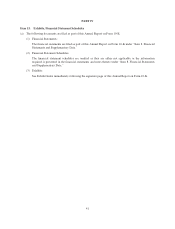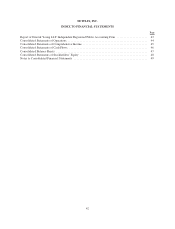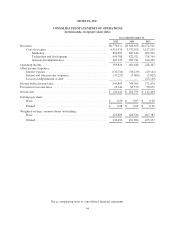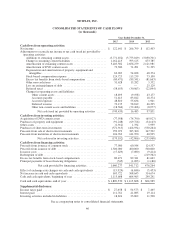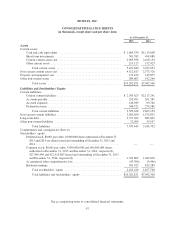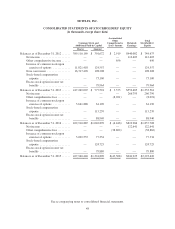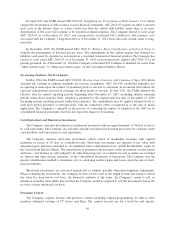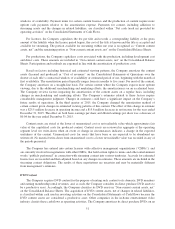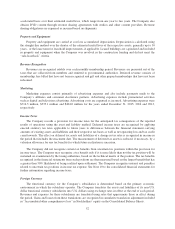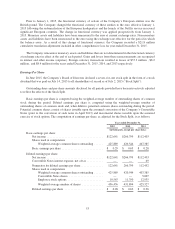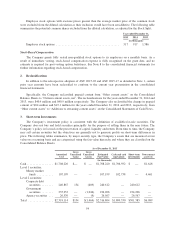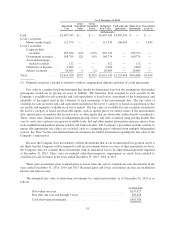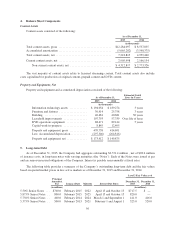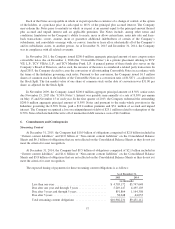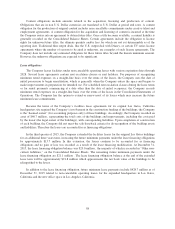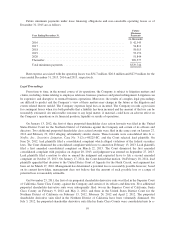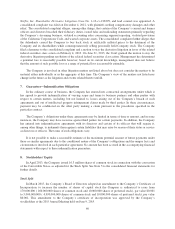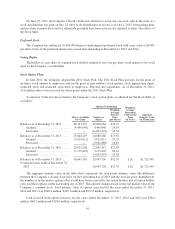NetFlix 2015 Annual Report Download - page 55
Download and view the complete annual report
Please find page 55 of the 2015 NetFlix annual report below. You can navigate through the pages in the report by either clicking on the pages listed below, or by using the keyword search tool below to find specific information within the annual report.windows of availability. Payment terms for certain content licenses and the production of content require more
upfront cash payments relative to the amortization expense. Payments for content, including additions to
streaming assets and the changes in related liabilities, are classified within “Net cash (used in) provided by
operating activities” on the Consolidated Statements of Cash Flows.
For licenses, the Company capitalizes the fee per title and records a corresponding liability at the gross
amount of the liability when the license period begins, the cost of the title is known and the title is accepted and
available for streaming. The portion available for streaming within one year is recognized as “Current content
assets, net” and the remaining portion as “Non-current content assets, net” on the Consolidated Balance Sheets.
For productions, the Company capitalizes costs associated with the production, including development cost
and direct costs. These amounts are included in “Non-current content assets, net” on the Consolidated Balance
Sheets. Participations and residuals are expensed in line with the amortization of production costs.
Based on factors including historical and estimated viewing patterns, the Company amortizes the content
assets (licensed and produced) in “Cost of revenues” on the Consolidated Statements of Operations over the
shorter of each title’s contractual window of availability or estimated period of use, beginning with the month of
first availability. The amortization period typically ranges from six months to five years. For most of the content,
the Company amortizes on a straight-line basis. For certain content where the Company expects more upfront
viewing, due to the additional merchandising and marketing efforts, the amortization is on an accelerated basis.
The Company reviews factors impacting the amortization of the content assets on a regular basis, including
changes in merchandising and marketing efforts. The Company’s estimates related to these factors require
considerable management judgment. Changes in estimates could have a significant impact on the Company’s
future results of operations. In the third quarter of 2015, the Company changed the amortization method of
certain content given changes in estimated viewing patterns of this content. The effect of this change in estimate
was a $25.5 million decrease in operating income and a $15.8 million decrease in net income for the year ended
December 31, 2015. The effect on both basic earnings per share and diluted earnings per share was a decrease of
$0.04 for the year ended December 31, 2015.
Content assets are stated at the lower of unamortized cost or net realizable value which approximates fair
value of the capitalized costs for produced content. Content assets are reviewed in aggregate at the operating
segment level for write-down when an event or change in circumstances indicates a change in the expected
usefulness of the content. Unamortized costs for assets that have been or are expected to be abandoned are
written off. No material write-down from unamortized cost to a lower net realizable value was recorded in any of
the periods presented.
The Company has entered into certain licenses with collective management organizations (“CMOs”), and
are currently involved in negotiations with other CMOs, that hold certain rights to music and other entertainment
works “publicly performed” in connection with streaming content into various territories. Accruals for estimated
license fees are recorded and then adjusted based on any changes in estimates. These amounts are included in the
streaming content obligations. The results of these negotiations are uncertain and may be materially different
from management’s estimates.
DVD Content
The Company acquires DVD content for the purpose of renting such content to its domestic DVD members
and earning membership rental revenues, and, as such, the Company considers its direct purchase DVD assets to
be a productive asset. Accordingly, the Company classifies its DVD assets in “Non-current content assets, net”
on the Consolidated Balance Sheets. The acquisition of DVD content assets, net of changes in related liabilities,
is classified within cash used in investing activities on the Consolidated Statements of Cash Flows because the
DVD content assets are considered a productive asset. Other companies in the in-home entertainment video
industry classify these cash flows as operating activities. The Company amortizes its direct purchase DVDs on an
51


